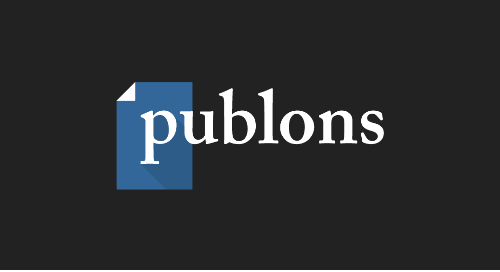helping-authors-get-published-referrals-and-transfers
Papers get rejected for all kinds of reasons; for example, you may read a great paper that doesn’t quite fit within your journal’s scope. If that paper is rejected, the author has to start the whole submission process again. We believe it is an important community service to help authors find a home for every good paper. We make this possible through two routes:
1.Creating journal transfer networks, which allow editors to refer publishable papers to related journals in their network.
2.Using machine-learning to offer authors of rejected papers a choice of appropriate journals via Wiley’s Transfer Desk Assistant
This resource page will provide you with an overview of both of these routes.
Contents:
Editor-driven referrals
What is a journal transfer network?
More than half of Wiley journals are part of a transfer network. If your journal participates in a transfer network, you can refer rejected articles that are methodologically sound to one or more relevant journals from a short list of preconfigured titles; the referral option is communicated to the author in the decision letter.
Editors can refer papers that have already been reviewed and those that have not been reviewed yet. For reviewed papers, should an author transfer their paper, their reviews will be transferred alongside their manuscript and any remaining submission files. For papers that have not been reviewed yet, an author can transfer their paper immediately upon receiving a referral decision and the receiving editor of the new journal can then send it out for review accordingly. If the author chooses to accept the transfer the manuscript is automatically moved to the receiving journal’s submission system, along with any reviewer reports, if applicable. Once the author completes the submission the receiving journal will then undertake their own editorial evaluation, which may include sending it out for additional peer review, to determine whether it’s suitable for further consideration. For journals that participate in editor-driven networks and/or in TDA, reviewers are notified in the initial invitation that their reviews and identity will travel to the recipient title if the author transfers their paper.
| Infographic: How Submission Can Be a Positive Experience - Discover the Benefits of a Journal Transfer Network |
If your journal does not currently participate in a transfer network, contact your Journal Publishing Manager if you would like to discuss joining one. Click the image on the right to expand an infographic showing how they work and the benefits for authors.
Why should editors refer papers?
As a journal editor, you are an influential leader within your research community. Alongside the responsibility of curating and developing your journal, you can provide an important service to your community by helping good papers get published through referring. Whether a manuscript is referred by an editor or transferred through an automated system, the resubmission process is simplified, benefiting both the author and the receiving editor. We encourage communication among all participating editors within a network for optimal outcomes.
Wiley continually seeks to improve the experience of authors publishing in our journals and to support editors in working with authors. We know that one of the hardest parts of being a journal editor is finding peer reviewers, and this is exacerbated by rejected papers being put through multiple rounds of peer review, increasing pressure on an already stretched system. By transferring articles with review reports, this saves duplication of work for peer reviewers and improves the efficiency of the review process. Whether transfers are editor-driven or automated through TDA, they make a journal more attractive to authors as they know they are likely to find a home for their paper through the process.
| Prof. Stephen P. Long, Editor-in-Chief of Global Change Biology, and Senior Editor of Plant, Cell and Environment, supporter titles of Ecology and Evolution. |
| 'In many ways, the author has nothing to lose. The referral option is just that, an option. As editors, we're not forcing them to transfer, or even recommending it—we're just presenting it as an alternative.' |
| Hear more from Prof. Long in Cascade Journals: What and Why? |
Authors receiving referral options have an overall improved publishing experience by getting their paper published faster.
Authors don’t always succeed in publishing in their first-choice journal and many methodologically sound papers are rejected only because of scope considerations. Most authors subsequently resubmit their manuscript to another journal, going through the time-consuming submission process of answering questions, entering data, and uploading documents again at another publication. The paper is often reviewed by additional experts who don’t have insight into the prior reviews, thereby taxing an already overworked reviewer pool. By referring papers, you can save authors valuable time and effort, and reduce pressure on peer reviewers.
Authors have the chance to revise their paper before completing the transfer, allowing them to incorporate comments from the editor and reviewers and thereby improving the overall quality of the manuscript.
| The benefits to editors | The benefits to authors | |
Benefitting the wider academic community that your journal serves. As an editor, you are a representative and advocate for your research community. By offering authors the opportunity to have their paper considered elsewhere, if not suitable for your journal, you’re helping researchers get their work published. Saving peer reviewer time. If evaluated by reviewers, the peer review reports travel with the transferred manuscript. The receiving journal’s editor can then appropriately consider these reports and use them in their own evaluation, improving the efficiency of the peer review process and saving reviewers time and effort. Providing a good publishing experience for authors means that they will be more likely to submit to your journal again and recommend it to their peers. Ultimately, happy authors will improve the overall health and reputation of your journal! | An improved publishing experience. Authors whose papers are referred, instead of outright rejected, have an improved chance of their paper being accepted in another journal. Referrals allow authors of rejected articles to transfer their manuscript with ease to a suitable alternative journal, saving the authors time and effort. Where journals have adopted Free Format submission, authors are not required to reformat their manuscript. Authors remain in control of their manuscript. Referrals are entirely optional and there is no obligation to take up the offer. Ensures that good content is published quickly and efficiently. Like all submissions to a journal, transferred submissions are subject to rigorous evaluation, and decisions are directed by clear editorial policies. '... they are likely to get a speedy decision and that can be a real advantage to authors if they take up the offer.' Prof. Stephen P. Long, Cascade Journals: What and Why? |
Can my journal be included in a transfer network?
If your journal does not currently participate in a transfer network, contact your Journal Publishing Manager if you would like to discuss joining one.
Transfer Desk Assistant (TDA)
What is TDA and which journals are participating?
Transfer Desk Assistant (TDA) is an automated referral system that saves authors valuable time and effort by helping them find appropriate journals in the Wiley portfolio and streamlining the resubmission process. TDA processes rejected articles only; articles that are rejected with an editor’s referral are not included. TDA recommendations are mapped by machine learning. TDA has been successfully piloted in over 100 journals since 2018 and is being expanded across the Wiley portfolio.
As of September 2020, there were 123 journals in TDA across nine subject areas: dentistry, ecology and evolution, food science, genetics, immunology, neuroscience, nursing, statistics, and veterinary medicine. We expect approximately 650 more titles to be added between October 2020 and April 2021, covering more than 40 subject areas.
The current TDA expansion includes only titles on ScholarOne.
Are editors involved in suggesting new journals for rejected authors?
TDA referrals are completely automated without editor involvement. The recommendation process is automated and only takes manuscripts that receive standard “reject” and “immediate reject” decisions. Therefore, referred papers are not fed into TDA. For comparison, in a normal editor-driven transfer workflow, the editor selects the target journal based on their knowledge of the journals available to them.
How does a transfer through TDA differ from a transfer as a result of an editor-driven referral?
When an author receives a decision “reject with referral,” they have the option of transferring their submission to a journal based on selections by the editor. With TDA the editor plays no role and, after receiving a rejection decision letter, the author receives a list of up to five relevant recipient journals in the TDA database.
In both cases authors simply check the details of their manuscripts, update it if they wish, and click confirm to complete the submission. If the author chooses to transfer their manuscript, it arrives at the new journal flagged as a transfer for further action.
Authors can, of course, also ignore the recommendation, maintaining full control over where their manuscripts are re-submitted.
What roles can journals play in TDA?
TDA is “fed” rejected manuscripts from feeder journals and searches for matches from a database of potential recipient journals. If a journal is not listed as a recipient, it won’t receive any manuscripts through TDA. Journals marked as both feeder and recipient both feed TDA and may receive submissions through it; however, they do not appear as a possible recipient title for their own rejected manuscripts.
Can my journal be included in Transfer Desk Assistant? How can I arrange this?
At present, TDA is only available to journals using ScholarOne as their Electronic Editorial Office. If your journal is on ScholarOne, contact your Wiley Journal Publishing Manager if you would like your journal to be included in this program.









